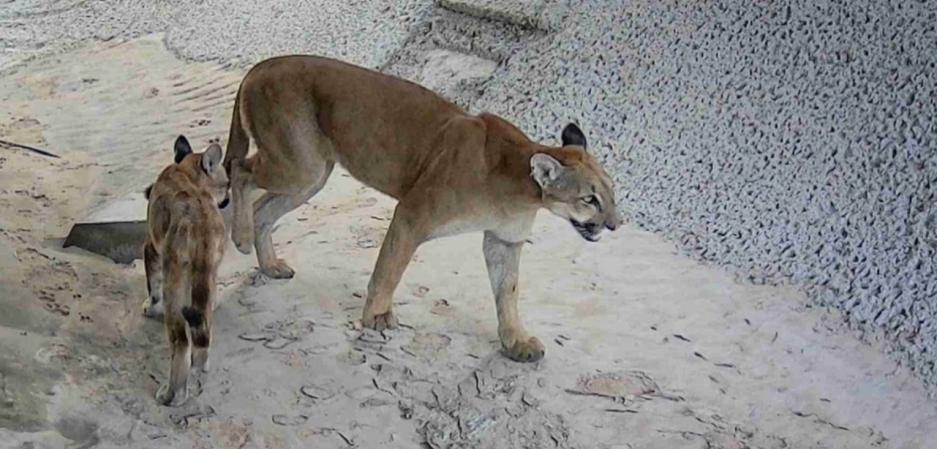
Positive Mobility
eMagProtection of local wildlife: from Germany to Brazil, how are highways adapting?
Transportation infrastructures are essentials for the economic development of regions and the freedom of movement for their inhabitants.
However, due to their territorial footprint, they can impact natural environments and biodiversity. The concession model is particularly well-suited for minimizing this environmental impact because the effects are measured over time, aligning with the long-term nature of concessions.
This is why the protection of natural habitats and biodiversity is a key pillar of VINCI Concessions' environmental policy. As a long-term operator, VINCI Concessions undertakes sustained actions to minimize this environmental footprint. For example, in partnership with local associations, VINCI Concessions teams develop solutions to ensure the continuity of wildlife movements.
From vegetated bridges over roads for larger species to tunnels under roads for targeted species, discover the solutions implemented on VINCI Highways infrastructures in Germany and Brazil.
Two wildlife crossings on the A7-2 highway in Germany
Via Niedersachsen, a subsidiary of VINCI Highways, recently completed the modernization and extension of the A7-2 highway section between Bockenem and Göttingen in Germany. This work included the construction of two overpasses specifically designed for wildlife.
Located near Hillerse and Northeim, these wildlife crossings were strategically placed along animal migration routes, helping to maintain natural habitats and reduce the risk of accidents on the highway. These vegetated bridges mimic natural environments, providing a safe pathway for local species such as wildcats, lynxes, deer, foxes, vipers, and many others.
These wildlife bridges have already proven effective in significantly reducing collisions between animals and vehicles, thereby improving road safety. The Northeim district plans to conduct long-term monitoring to gather data for future projects.

Remarkable wildlife sightings on Entrevias crossings in Brazil
Brazil is known for its exceptional biodiversity, with abundant and varied wildlife that plays a crucial role in maintaining the balance of local ecosystems. Entrevias, the concessionaire for two toll road sections in Brazil until 2047, in which VINCI Highways became the majority shareholder in 2023, is fully aware of this richness. These sections cover a 570-kilometer network that traverses the state of São Paulo, connecting the states of Minas Gerais in the north and Paraná in the south, right in the heart of the Atlantic Forest—a tropical rainforest biome along the Brazilian coast. This forest harbors particularly dense biodiversity, largely due to its isolation from other South American forested areas, especially the Amazon Basin, by dry savannas. As part of the VINCI Highways network and its environmental plan, Entrevias implements initiatives aimed at protecting wildlife while ensuring the safety of road users.
Wildlife crossings to protect endangered species
Some of these species, such as the ocelot, puma, and otter, are classified as vulnerable on the São Paulo State endangered species list. With over 44 wildlife crossings already in operation and 30 more under construction, primarily along the SP-333 between Marília and Florínea, Entrevias reaffirms its commitment to biodiversity preservation. These crossings are designed to accommodate a wide variety of species, ranging from large mammals like jaguars and deer to capybaras, reptiles, and birds.
Additionally, Entrevias has implemented measures to rescue injured domestic and wild animals along the highways. Domestic animals are directed to approved shelters, while wild animals receive care at partner triage centers. Once recovered, domestic animals are put up for adoption, while wild animals are released back into their natural habitats.

A dedicated passage for amphibians
In a unique initiative within the state of São Paulo, Entrevias has built a passage specifically designed for amphibians. The goal is also to connect areas of vegetation and permanent preservation, acting as ecological corridors that facilitate movement and ecological interactions.

These initiatives demonstrate that road safety and wildlife protection go hand in hand, highlighting VINCI Highways' commitment to balancing mobility and biodiversity conservation.
Why are wildlife crossings particularly effective?
To encourage animals to use designated crossings, fences can be installed along highways to guide them towards underpasses, where they can cross safely without the risk of being hit by vehicles. Camera monitoring also allows for tracking the use of these crossings and provides valuable data to enhance existing measures.
According to research conducted by the Brazilian Center for Road Ecology Studies (CBEE), it is estimated that every second, 15 animals are killed after being hit on Brazilian highways. Approximately 475 million wild animals are killed on Brazilian roads each year, including around 430 million small vertebrates, with the rest comprising medium-sized animals (40 million) and large animals (5 million).